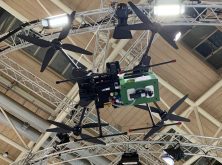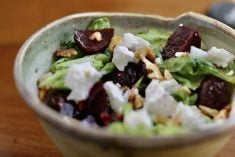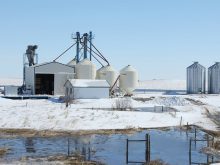Former U of A range management specialist turns native wood and steel from farm machinery into custom bush knives
On an acreage southeast of Edmonton, Barry Irving builds custom bush knives with unique handles and all are made from native wood he has collected from around North America.
During his career as a range management specialist at the University of Alberta, Irving, now retired, was the former manager of the University of Alberta’s Rob Berg Kinsella Research Ranch and Mattheis Research Ranch near Duchess, Alta.
These operations had a combined total of 1,800 cows and 25,000 acres of rangeland.
Irving also taught courses on the identification of native plants and shrubs of North America. He knows about the different types of wood.
Irving is involved with the Society for Range Management, an international professional scientific organization that promotes studying and conserving resources on the world’s rangeland. SRM members are land managers, scientists, students, producers and conservationists. As a past-president of this organization and through his contacts, Irving has gathered a collection of native wood to make his handles.
Irving got his love for native wood from his involvement in coaching his students in an annual plant identification contest as part of the annual meeting of the SRM. Students have to identify 200 native plant species from important rangeland grasses, forbs and shrubs from across North America. In the past, some 25 university teams competed for top honours.
Through his involvement, Irving has added to his collection of native wood.
“I got interested in making knives while my wife Judy and I would watch the American TV reality show called Forged in Fire where contestants competed to forge bladed weapons,” said Irving. “I didn’t know a lot about metal forging but learned a lot by trial and error.
“I have a forge and blacksmith shop in my backyard and use recycled steel from different pieces of farming equipment to fashion my knife blades,” said Irving.
“I get steel from spring cultivators, lawnmower blades and straw chopper blades from a John Deere combine.
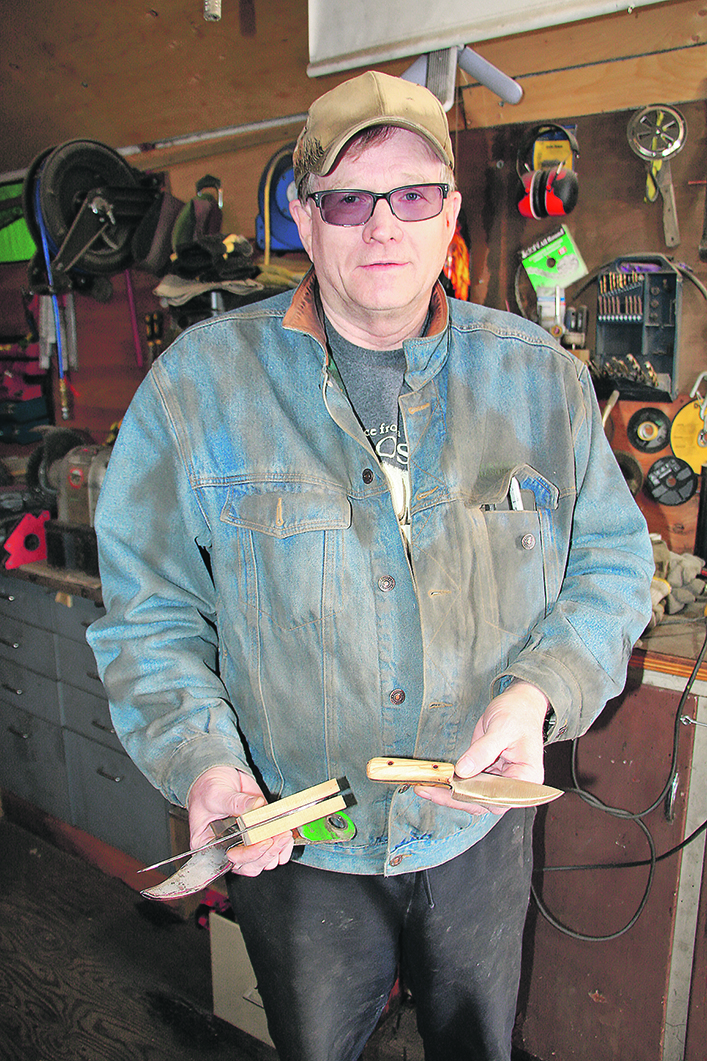
“I stay away from things that require straight edges and therefore straight cuts. Curved handles and such are more forgiving of my inability to cut straight. I fashion the shape of the knife blade by using a metal grinder and then I heat the pre-shaped blade in my forge to orange hot and pound it out on my anvil to stretch out the steel. The pounding on the anvil will spread out the steel until I get the shape and length of blade that I am looking for.
“I then harden the steel by reheating it to a slightly lower temperature in order to start the hardening process. I can tell when the blade is hot enough by the colour or by using salt, which will melt at the correct temperature for heat treating the blade. The blade will also become demagnetized at the high temperature required for hardening.
“When the temperature is high enough, I quench the blade in a pail of hydraulic fluid to rapidly cool it. I used a scientific method to choose the hydraulic oil for quenching, I had a gallon of it in my shed when I started, so that’s what I used.”
After hardening the blade, Irving sharpens and shines it by first “skating” it with a coarse file. When the steel is properly hardened, the file will basically skate across the surface. Otherwise, the file will simply grab the surface of the knife.
He then continues the sharpening process by using a narrow belt sander with various grits of sandpaper to hone a sharp blade. He does a final sharpening with a 6000 grit wet stone.
“My favorite part of building knives is the handle. I try to use native woods if I can, but recently I did buy one olive board in Edmonton. It has really nice zebra type grain.
“Unfortunately, all our northern native species in Alberta that are hard enough for handles are also pretty bland for grain.”
He said he has used saskatoon and chokecherry, which make good handles but have little character.
“Caragana is soft but has a nice grain and is readily available throughout Alberta and although it is not native, it is naturalized.”
He said he collects wood from other regions during his travels for SRM meetings.
“Mountain mahogany and Texas and Arizona mesquite, madrone and western juniper have good character. I have a few friends from Texas now sending me some handle material.
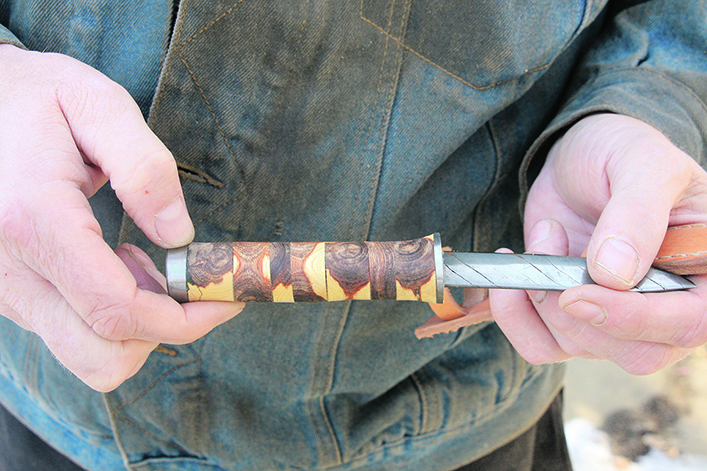
“Manzanita is another of my favourites. It’s about the most beautiful wood that can be had. It’s protected in California but I can find it throughout the western side of the Rocky Mountains and into the Great Basin. I did not find any in my last trip south, but I’m always looking for handle wood.”
He said one of his favourite of the knives he has made is a replica of his father’s Second World War service knife.
“It has a stacked leather handle with a hidden tang. I did a bit of research on these knives and they were a standard issue for U.S. forces and some Canadian soldiers as well. They are more for basic living than hand-to-hand combat. They were meant for skinning, opening cans, chopping and other labour-type tasks.
“The K-Bar knife of the U.S. military may have evolved from this style and was more for hand combat. It was about the same size but with a narrower and sharper pointed blade. My brother has my dad’s original knife, as it is a bit of a family heirloom, “said Irving.
Over the years, Irving has made more than 40 knives and gives them as gifts to friends. He gave two skinning knives to friends in Texas for skinning wild boars and one uses his for a form of hand-to-hand combat with wild boars.
Some of his Texas friends are pretty wild west in their recreational activities, he said.





